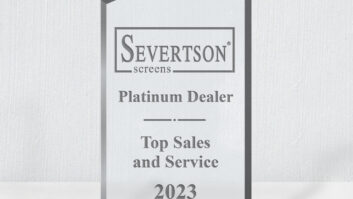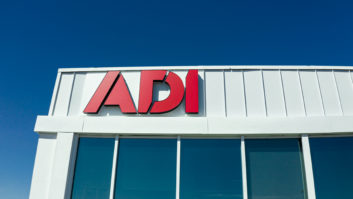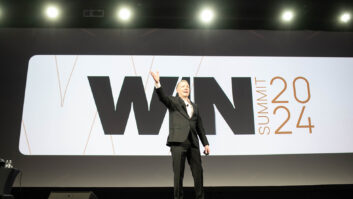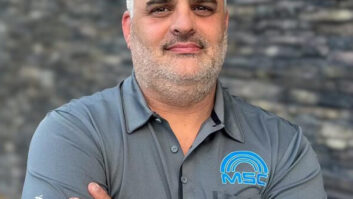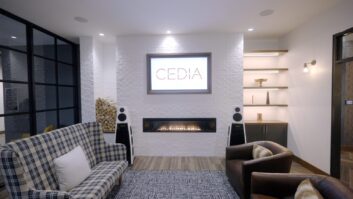Steve Caldero, senior VP/COO of Southern California-based retailer Ken Crane’s Home Entertainment, who spent more than 20 years on the supplier side, provided his unique view of both sides of the industry, during the Consumer Electronics Association’s (CEA) CEO Summit, here.
In his one-on-one interview with Gary Shapiro, president/CEO of CEA, Caldero discussed his experiences at Ken Crane’s since February 2005, his almost 20 years with Yamaha in various sales and marketing roles, and prior to that a four-year stint as national sales manager of JBL.
Caldero is a long-time audiophile who built audio kits while growing up and worked at a small CE retailer part time during college. “I would have paid them to work there. I got to play with the toys,” he said.
He got his first big break at JBL years later. “I was on the job for six weeks and the national sales manager quit. I was one of two regional sales managers,” he said. He wanted the job but was afraid of rejection. Industry legend and CE Hall of Famer Jerry Kalov was to make the decision. A friend convinced him to ask because, “What have you got to lose?”
Caldero spent four years with JBL until the company decided to move its sales operations to the East Coast. He quit and joined Yamaha Electronics in 1985 where he played a major role in building the brand over two decades.
For much of Caldero’s career new technologies and products were released to “independent specialists, at higher prices. Eventually that technology would filter down to mass merchants.” He said when at Yamaha there were different models and feature packages for different retail channels. “Today, from day one, everything goes everywhere. It is a battle of who can sell the most products, quickest and at the cheapest price.”
Caldero said when he was with Yamaha and JBL he would say, ” ‘Those damn retailers would be better if they would listen to us.’ I felt they were … misguided. I thought what was best for us would be best for them.”
Now on the retail side, Caldero said, “It is difficult to be on the front line to experience the consumer’s wants, needs, likes and dislikes. The industry now presents every year better products with more features and a lower price … it confuses the hell out of them. As a manufacturer I never thought in those terms.”
Caldero suggested that manufacturing execs should intern at a retailer for a time to see “ways consumers look at products, and see what features are important and not important to them.” For instance, when joining Ken Crane’s in 2005, “More people bought ‘flat-screen TV’ than HDTV, due to the style involved, especially when you consider there wasn’t much HD programming available back then.”
Caldero said he would take these supplier interns “first to the sales floor and deal with customers there. Then take them to the custom installation area for a few days and handle questions, go to homes and see the challenges there. Finally I’d take them to the service department where consumers are never happy.”
Caldero said he made mistakes dealing with retail when on the supplier side. When he was with Yamaha they entered the video category for the first time with an LCD projector. As Caldero put it, “We did a test with big East Coast retailer, spent plenty of money on store installations and went back to see the retailer did not have the projectors on. When we asked why, a floor salesman said, ‘That’s a custom department product, not retail, and we won’t get paid on that.’ We should have asked about the whole merchandising process and how it was to be sold.”
When Caldero joined Ken Crane’s, CEO Casey Crane told him he wanted the chain to push audio and home theater.
To get Ken Crane’s video-oriented commissioned salespeople to sell more audio was a struggle. Caldero provided incentives to sell audio, but when that didn’t work, “We stopped giving spiffs on video. For a few weeks I had someone else start my car at night. Eventually we reinstated video spiffs, if they sold a certain amount of audio that month, so that helped get their attention.”
While some predicted a wholesale change in its sales force, only one salesperson was fired, he said.
Today video is still the biggest part of Ken Crane’s business, but audio sales have gone up from the single digits when he joined to around 20 percent. Warranties are around 9 percent of the business, furniture 8 percent and accessories 4 percent to 6 percent.
In negotiations with manufacturers, Caldero said, “I make them nervous. They are telling me the same things I used to tell retailers. What I try to get across is how we can make a deal that is good for both of us and work together.”
The way the CE business has changed in recent years everything is about “supply-chain management, not about relationship selling,” Caldero stated. “We talk about sales forecasts, logistics, and some are not candid about how many units or when an order will come from Asia.”
Caldero cited Bose and Monster Cable as two suppliers who “get it” by training floor salespeople and following up with demonstrations and the like. As for video suppliers, he said, many think “if they get you the shipment, they think their job is done.”
In today’s retail climate, he said, the main thing Ken Crane’s and other specialty retailers have to do to survive and thrive is to “differentiate ourselves from Best Buy, Wal-Mart and mass retailers. We have to create an experience you can’t get anywhere else.”






